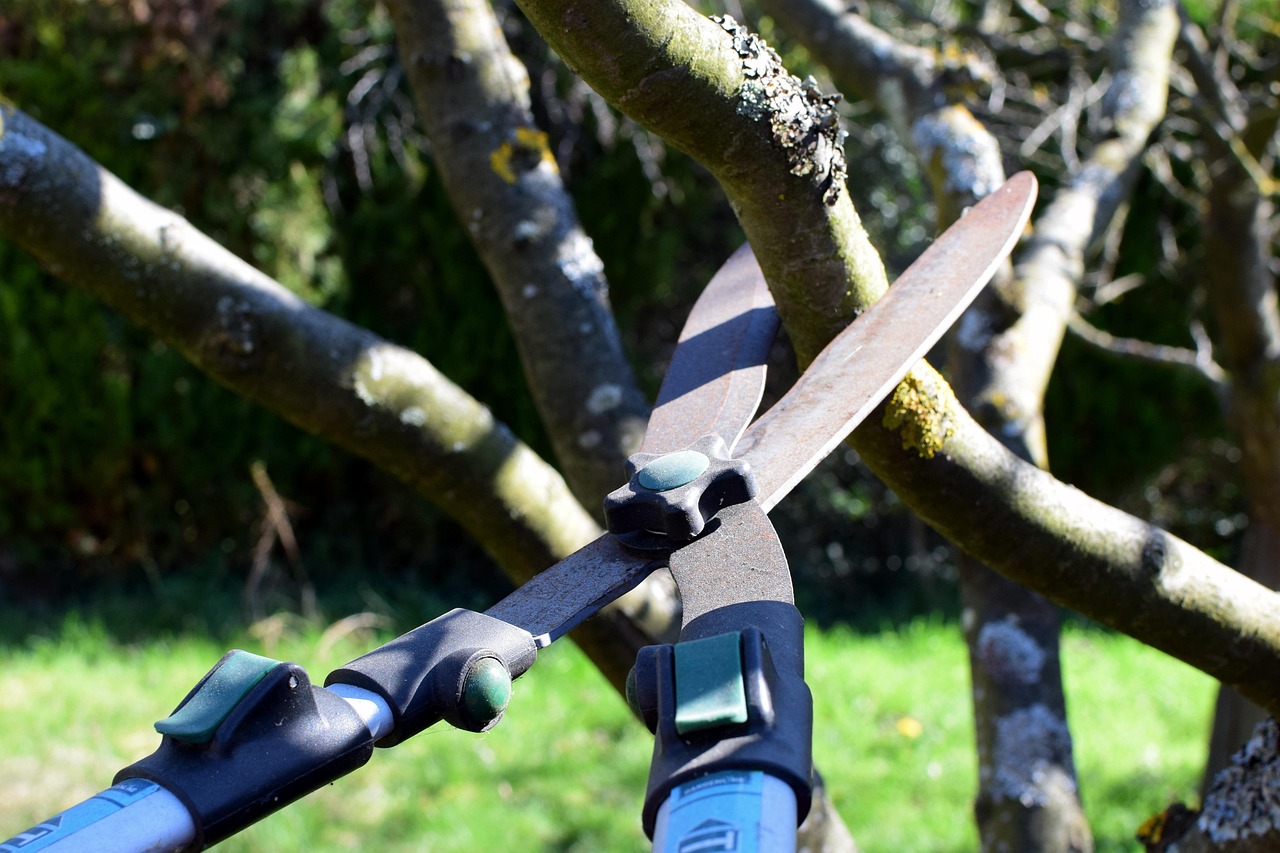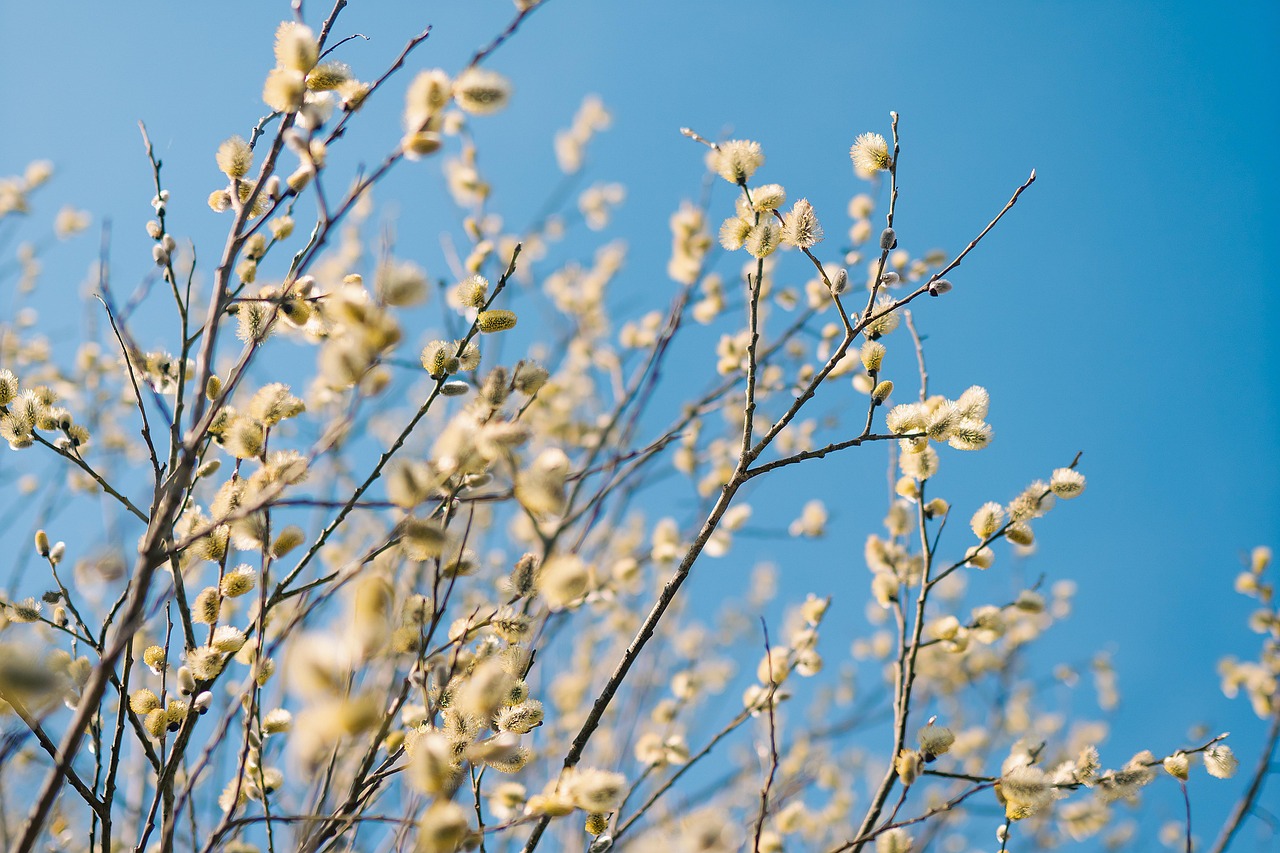Willow tree pruning promotes healthier growth by removing dead or diseased branches, allowing for better air circulation and sunlight penetration. Proper pruning techniques also encourage strong structural development and can enhance the tree’s aesthetic appeal.
Willow trees are known for their graceful, arching branches and lush foliage. They thrive near water sources, making them a popular choice for landscaping near ponds and rivers. However, like all trees, willows require regular maintenance to ensure they remain healthy and vibrant. One of the most crucial aspects of willow tree care is pruning. Pruning not only helps in maintaining the shape of the tree but also encourages new growth and prevents potential hazards.

Understanding the best times and techniques for pruning willows is essential for any gardener or tree enthusiast. Willows are fast-growing trees, often reaching heights of 30 to 60 feet, depending on the species. Their rapid growth means they can become overgrown and unruly if not pruned regularly.
Understanding Willow Trees
Before diving into pruning steps, it’s essential to understand the characteristics of willow trees. Here are a few key points about willow trees:
| Characteristic | Description |
|---|---|
| Species | There are several species of willows, including the weeping willow, black willow, and golden willow. |
| Growth Habit | Willow trees typically have a broad, spreading canopy with drooping branches. |
| Soil Preference | They thrive in moist, well-drained soils but can adapt to various soil types. |
| Sunlight Requirements | Willows prefer full sun but can tolerate partial shade. |
| Pest and Disease Resistance | They can be susceptible to pests like aphids and diseases such as willow scab. |
With this basic understanding of willow trees, it becomes clear why proper care, particularly through pruning, is necessary. Pruning helps to maintain their health and longevity while also enhancing their natural beauty.

When to Prune Willow Trees
The timing of pruning is critical for optimal results. Willow trees should generally be pruned during late winter or early spring before new growth begins. This timing allows the tree to heal from cuts before the stress of new growth occurs. Pruning during this period also minimizes the risk of sap bleeding, which can occur if cuts are made during active growth seasons.
In some instances, light pruning can be performed in late summer or early fall to remove any unwanted branches that may have developed during the growing season. However, it is advisable to avoid heavy pruning during these times, as it can stress the tree and lead to poor growth in subsequent seasons.
Essential Pruning Tools
Having the right tools is essential for effective pruning. Proper tools not only make the job easier but also help ensure clean cuts that promote healing. Here are some essential tools for pruning willow trees:

- Pruning Shears: Ideal for cutting small branches and stems.
- Loppers: Suitable for cutting thicker branches that are too large for shears.
- Saw: A handsaw or pole saw is necessary for larger branches or limbs.
- Gloves: Protect your hands from sharp tools and branches.
- Ladder: Use a sturdy ladder for reaching high branches safely.
Before starting the pruning process, it is essential to inspect your tools. Ensure they are sharp and clean to make precise cuts that will heal quickly. Dull tools can damage the tree and increase the risk of disease.
Steps for Pruning Willow Trees
Now that you understand when to prune and what tools to use, here are the steps involved in properly pruning a willow tree:
- Assess the Tree: Start by examining the tree for any dead, damaged, or diseased branches. These should be your primary targets during pruning.
- Remove Dead or Diseased Wood: Cut back dead branches to healthy wood. This helps prevent disease from spreading throughout the tree.
- Thin Out Crowded Areas: Remove branches that cross each other or grow inward towards the center of the tree. This promotes better air circulation and light penetration.
- Shape the Tree: Trim back long or overgrown branches to maintain a pleasing shape. Aim for a balanced appearance while allowing adequate space between branches.
- Make Clean Cuts: Always cut at a 45-degree angle just above a bud or branch junction to encourage healthy growth.
- Step Back Regularly: Periodically step back to assess your work. This ensures you maintain an overall balance in shape and size.
This step-by-step guide will help ensure your willow tree remains healthy, beautiful, and ready for vibrant growth in the upcoming seasons.

Common Mistakes in Willow Tree Pruning
While pruning is essential for the health of willow trees, there are common mistakes that many gardeners make. Understanding these pitfalls can help ensure your pruning efforts are effective and beneficial. Here are some frequent mistakes to avoid:
- Pruning at the Wrong Time: Pruning during active growth seasons can stress the tree and lead to sap bleeding. Always aim for late winter or early spring.
- Over-Pruning: Removing too many branches can weaken the tree. It is important to prune moderately to maintain overall vigor.
- Neglecting Tool Maintenance: Using dull or dirty tools can lead to jagged cuts that do not heal properly. Always ensure tools are clean and sharp.
- Ignoring Tree Structure: Pruning without considering the natural shape of the tree can result in an unattractive appearance. Aim for a balanced and natural look.
- Failing to Clean Up: Leaving cut branches on the ground can attract pests and diseases. Always clean up after pruning to keep the area tidy.
Signs Your Willow Tree Needs Pruning
Recognizing the signs that your willow tree needs pruning is crucial for maintaining its health. Here are several indicators that it might be time to grab your pruning tools:
- Dead or Dying Branches: If you notice branches that are brittle, discolored, or lifeless, they should be removed to prevent disease spread.
- Overcrowded Growth: Branches that are tangled or crossing each other can limit air circulation and light. Thinning them out will benefit the tree.
- Pest Infestations: If certain areas of the tree are being attacked by pests, pruning may help reduce their population and promote healthier growth.
- Unwanted Shape: If your willow tree has become unkempt or lopsided, it is time to prune for a more aesthetically pleasing appearance.
- Reduced Leaf Production: If leaves are sparse or not appearing as vibrantly as usual, pruning may stimulate new growth.
Aftercare for Pruned Willow Trees
After pruning, proper care is essential to help your willow tree recover and flourish. Here are some aftercare tips to follow:
- Watering: Ensure the tree receives adequate water, especially during dry spells. Deep watering encourages root development.
- Mulching: Apply a layer of organic mulch around the base of the tree. This helps retain moisture and suppress weeds.
- Fertilizing: A balanced fertilizer can provide essential nutrients, promoting healthy regrowth. Consider using a slow-release formula.
- Monitoring for Pests: Keep an eye on the tree for signs of pests or diseases after pruning. Early detection can prevent larger issues.
- Avoiding Stress: Minimize disturbances around the tree during its recovery phase. Avoid heavy foot traffic near the roots.
The Benefits of Regular Pruning
Regular pruning offers numerous benefits beyond just aesthetics. Here are some advantages of maintaining a regular pruning schedule for your willow tree:
| Benefit | Description |
|---|---|
| Enhanced Growth | Promotes new growth by allowing sunlight and air to reach more parts of the tree. |
| Pest Control | Aids in controlling pests by removing infested branches before they spread. |
| Disease Prevention | Reduces the risk of disease by eliminating dead or damaged wood that can harbor pathogens. |
| Aesthetic Appeal | Keeps the tree looking neat and attractive, enhancing the overall landscape. |
| Structural Integrity | Improves the tree’s structure by promoting strong branching patterns, reducing the likelihood of breakage during storms. |
Caring for Different Willow Species
Different species of willow trees may have unique pruning needs based on their growth habits and characteristics. Understanding these differences can help you tailor your pruning approach. Here are some general guidelines for popular willow species:
Weeping Willow (Salix babylonica)
The weeping willow is known for its long, drooping branches. It requires careful pruning to maintain its unique shape. Focus on thinning out crowded branches while preserving the graceful appearance.
Black Willow (Salix nigra)
The black willow grows rapidly and can become quite large. Regularly prune to control its size and shape while removing any dead wood that may develop.
Pussy Willow (Salix discolor)
Pussy willows are often pruned back hard in late winter to encourage vibrant catkin growth in spring. This species benefits from annual rejuvenation pruning.
Caring for different willow species will ensure that you maintain their health and beauty while accommodating their specific growth patterns.
Environmental Considerations for Pruning Willow Trees
When pruning willow trees, it is crucial to consider environmental factors that can impact the tree’s health and growth. These factors include soil conditions, climate, and the surrounding ecosystem. Understanding these elements will help you make informed decisions during pruning.
Soil Conditions
Willow trees prefer moist, well-drained soils but can adapt to various soil types. Here are some key soil considerations:
- Drainage: Ensure that the soil has good drainage to prevent root rot. Poorly drained soils can lead to fungal diseases.
- Soil pH: Willows thrive in slightly acidic to neutral pH levels (6.0 to 7.0). Conduct a soil test to determine pH and amend if necessary.
- Nutrient Levels: Test for nutrient deficiencies. Adding organic matter or fertilizer can improve soil fertility and promote healthy growth.
Climate Factors
The climate in which your willow tree is growing can significantly influence its pruning needs. Consider the following:
- Temperature: Willows prefer temperate climates. In extreme heat or cold, adjust your pruning schedule accordingly.
- Rainfall: Adequate moisture is crucial for willow trees. If your area experiences drought, ensure the tree is watered regularly after pruning.
- Wind Conditions: Strong winds can damage young branches. Prune to maintain a sturdy structure that can withstand wind stress.
The Role of Mulching in Pruning Care
Mulching is an essential practice that complements the pruning process. Applying mulch around the base of your willow tree offers several advantages:
- Moisture Retention: Mulch helps retain soil moisture, reducing the need for frequent watering.
- Weed Suppression: A layer of mulch prevents weed growth, which competes with the willow tree for nutrients and water.
- Temperature Regulation: Mulch insulates the soil, keeping it cooler in summer and warmer in winter.
- Nutrient Enrichment: Organic mulches decompose over time, adding beneficial nutrients back into the soil.
When mulching, use materials such as wood chips, straw, or shredded leaves. Apply a 2-4 inch layer around the base of the tree, but avoid piling mulch against the trunk to prevent rot.
Pest Management After Pruning
After pruning, it is vital to monitor for pests that may target your willow tree. Some common pests affecting willows include aphids, spider mites, and caterpillars. Here are strategies for effective pest management:
Identification
Regularly inspect your willow tree for signs of pest infestations:
- Aphids: Look for sticky residue on leaves or curled leaves indicative of aphid presence.
- Spider Mites: Check for fine webbing on branches or leaf discoloration.
- Caterpillars: Look for chewed leaves or visible caterpillars on branches.
Pest Control Methods
If pests are detected, consider the following control methods:
- Natural Predators: Introduce beneficial insects like ladybugs to control aphid populations naturally.
- Insecticidal Soap: Use insecticidal soap sprays to target soft-bodied insects, taking care to follow label instructions.
- Cultural Practices: Maintain good sanitation by cleaning up fallen leaves and debris that may harbor pests.
- Pesticides: As a last resort, consider chemical pesticides but use them sparingly and according to local regulations.
The Importance of Seasonal Care for Willow Trees
Seasonal care plays a significant role in maintaining healthy willow trees. Each season presents unique challenges and opportunities for care:
Spring Care
Spring is a crucial time for willow trees as they start to grow actively. Key tasks include:
- Pruning: Complete any necessary pruning before new growth begins to encourage vibrant foliage and flower production.
- Fertilizing: Apply a balanced fertilizer to support new growth.
- Irrigation: Ensure consistent watering as temperatures rise and growth accelerates.
Summer Care
During summer, focus on maintaining health and managing pests:
- Watering: Deep water during dry spells to keep roots hydrated.
- Pest Monitoring: Continue monitoring for pests and treat any infestations promptly.
- Weed Control: Keep the area around the tree free of weeds that may compete for nutrients.
Fall Care
As fall arrives, prepare your willow tree for winter:
- Final Pruning: Make any necessary adjustments to shape the tree before dormancy.
- Mulching: Apply mulch to protect roots from frost and conserve moisture.
- Irrigation Reduction: Gradually reduce watering as temperatures drop.
winter Care
Winter is a dormant period for willow trees, but care is still essential:
- Avoid Heavy Snow Loads: Gently remove snow from branches to prevent breakage.
- Pest Inspection: Check for any signs of overwintering pests and take preventive measures if necessary.
- Plan Ahead: Review your pruning schedule and prepare tools for spring care.
This seasonal approach ensures that your willow trees receive continuous care throughout the year, promoting their overall health and vitality.
Additional Tips for Successful Pruning
In addition to the comprehensive pruning strategies discussed earlier, there are several additional tips that can enhance your willow tree care practices. These tips can help ensure your willow trees thrive and remain healthy throughout their lifespan.
Understanding Growth Patterns
It is important to recognize that different species of willow trees exhibit varying growth patterns. Understanding these differences can inform your pruning techniques:
- Growth Rate: Fast-growing species may require more frequent pruning to manage their size and shape, while slower-growing varieties may need less intervention.
- Branch Structure: Pay attention to how branches grow. Willows typically have a natural tendency to arch. Pruning should support this characteristic while removing competing or crossing branches.
- Response to Pruning: Some willow species respond very well to hard pruning, which can stimulate vigorous new growth, while others may be more sensitive to heavy cuts.
Timing and Weather Conditions
When planning your pruning sessions, consider the weather conditions:
- Dry Days: Choose dry days for pruning to minimize stress on the tree and reduce the risk of fungal infections from moisture.
- Avoid Rainy Seasons: Pruning during wet weather can lead to increased disease susceptibility. Wait for dry spells to carry out your pruning tasks.
- Temperature Considerations: Mild temperatures are ideal for pruning, as extreme cold can damage cuts and impede healing.
Learning from Experienced Gardeners
If you are new to pruning willow trees, consider seeking advice from experienced gardeners or local horticultural societies. They can provide valuable insights and tips based on regional practices. Joining online forums or local gardening clubs can also be beneficial for sharing experiences and learning from others.
Documenting Changes
Keeping a record of your pruning activities can be incredibly helpful:
- Pruning Dates: Note when you pruned, what was removed, and any changes observed in the tree’s growth afterward.
- Health Observations: Document any health issues or pest problems encountered over time. This will help you adjust your care practices as needed.
- Long-Term Planning: Use your records to plan future pruning sessions and care routines based on past experiences.
Final Thoughts
Pruning willow trees is an essential part of maintaining their health and beauty. By following the appropriate techniques and timing, you can ensure that your willow trees thrive year after year. Remember that proper pruning not only enhances the aesthetic appeal of the tree but also promotes robust growth and prevents diseases.
As you continue to care for your willow trees, keep in mind the importance of seasonal care, environmental factors, and pest management. Each aspect plays a significant role in creating a healthy ecosystem for your trees. With patience and practice, you will become more proficient in pruning techniques, allowing you to enjoy vibrant and flourishing willow trees in your landscape.
Ultimately, successful willow tree pruning is about understanding the unique needs of each species while adapting to changing conditions in your garden. By integrating these practices into your routine, you will contribute positively to the overall health and longevity of your willow trees. Whether you’re a seasoned gardener or just starting out, the joy of nurturing these beautiful trees will undoubtedly enhance your gardening experience.
